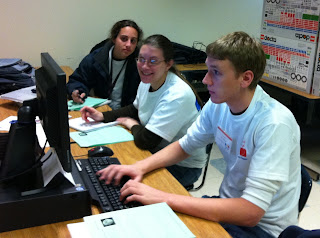Social Media/Mobile Technology/Real-Time Information/Location Services and Their Potential Impact
Abstract
Social media has swept the world in the past 2 years, but it has not yet been widely adopted or used in many organizations. The discussion will include how new media (social, mobile, real-time information, and location services) could be used by organizations to support their mission, in addition to people's personal use.
Depending on the available time, some of the following topics will be discussed:
- Sorting through what is good and what is helpful.
- Filtering, acquiring, and sharing information using social media.
- Increasing the number of "friends" (acquaintances) and role of contacts within organizations & outside.
- Looking at the potential of social search.
- Looking at the role of mobile platforms in enabling an effective use of social media.
- Sampling the social media platforms, e.g., Twitter, Facebook, Ning.
- Advantages and disadvantages of blogs, Twitter, Facebook, photo sharing (e.g., Flickr) & email.
- Community management and how to develop and implement successful social media strategies.
- Blurring the boundary between life, study, and work.
About the Speaker
Dr. Gershon works on combining creative expressions like storytelling, film, social media, and visual and interactive design with technology and strategic planning. Dr. Gershon is a Senior Principal Scientist at the MITRE Corporation where he focuses on research and practical applications of presentation and visualization of data and information, as it relates to perception, society, storytelling, culture, and new media (social, mobile, real time, community organizing). Routinely, he tries very hard not to torture his audience with PowerPoint slides and bully bullets whenever possible. In his free time, Dr. Gershon, among other things, participates in a number of national and international committees.
Talk Details
Please note that the talk is free, however, there is a charge for the meal.
Date: Tuesday, December 14, 2010
Time: Dinner: 6:30 PM Presentation: 7:30 PM
Program: Social Media/Mobile Technology/Real-Time Information/Location Services and Their Potential Impact
Presenter: Dr. Nahum Gershon, Senior Principal Scientist, The MITRE Corporation
Place: Special Events Room, First Floor, Olmsted Building, Penn State Harrisburg, 777 West Harrisburg Pike, Middletown, PA 17057
Dinner Cost: $20 IEEE members & guests; $10 students & life members
Contact: To register for dinner and for additional information, contact Aldo Morales, email: awm2@psu.edu, phone: 717-948-6379
If you plan to attend the dinner, please RSVP (preferably by Email) by Friday 12/10/10 so we can get the catering count right for our hosts.
Important Note: Dinner no-shows will be charged if not canceled by December 12. Also, we cannot guarantee late dinner reservations. There is no charge for attending the talks or tour sessions of our section meetings provided that you register in advance and clearly specify that you are not interested in the dinner.



